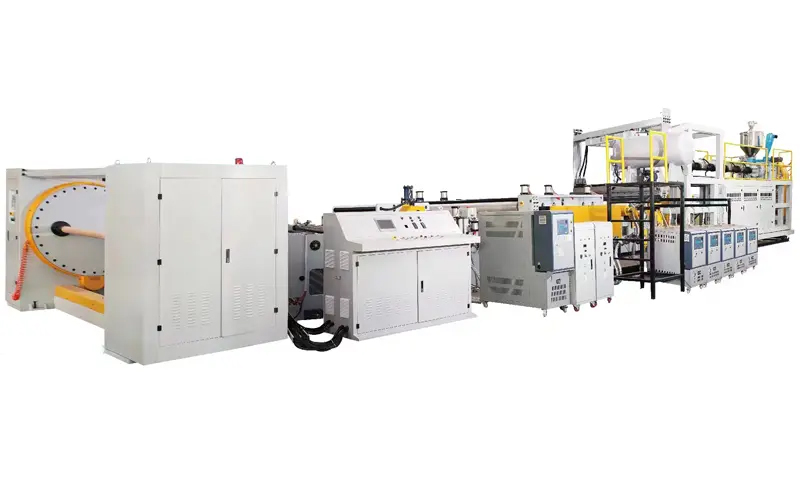Considering current logistics characteristics and the transportation requirements of cast film machines, the choice between sea freight and rail transport should comprehensively evaluate the following key factors:
I. Sea Freight Solution Analysis
Cost Efficiency
Sea freight unit costs are significantly lower than air transport, especially suitable for large-volume heavy equipment like cast film machines. Reference data shows the base rate for 40-foot containers on Middle East routes is approximately 6,000 - 7,150 (post-January 2025 adjustment).
For disassemblable equipment, Less than Container Load (LCL) shipping can further reduce costs, saving about 60% compared to full container transport.
Applicable Scenarios
Suitable when destinations are near major Middle Eastern ports (e.g., Jebel Ali Port in Dubai, Salalah Port in Oman), enabling direct port pickup.
Appropriate where lead times are flexible (total transit ~35-45 days) with no urgent production startup requirements.
Risk Advisory
Red Sea shipping routes are affected by regional conflicts, with some carriers diverting via the Cape of Good Hope, extending voyages by 15-20 days.
Carriers widely implement Peak Season Surcharges (PSS) in early 2025—advance slot booking is essential to mitigate rate volatility.
II. Railway Transport Solution Analysis
Time Efficiency Advantage
China-Europe Railway Express routes extending to the Middle East (e.g., Iran-Turkey direction) offer transit times of ~21-28 days, 40% faster than sea freight.
Punctuality rates reach 99%, with minimal impact from natural disruptions.
Cost & Customs Clearance
Rail freight costs fall between sea and air transport, but subsidies for China-Europe Railway Express can reduce total costs by 8%.
The TIR (Transports Internationaux Routiers) system enables “single customs clearance,” avoiding multi-border inspection delays (e.g., via Kazakhstan to Iran).
Limitations
Coverage limited to specific Middle Eastern nodes (e.g., Tehran, Istanbul), requiring last-mile road transport.
Shipments typically require full-container or dedicated train arrangements, reducing flexibility for small batches.
III. Decision Recommendations (Based on Equipment Characteristics)
| Consideration Dimension | Prioritize Sea Freight | Prioritize Rail Transport |
| Lead Time | ≥45-day delivery cycle acceptable | ≤25-day arrival required |
| Cost Budget | Extreme cost compression (<$6,000/container) | Moderate premium acceptable (~$7,000–9,000/container) |
| Destination | Near ports (e.g., Dubai, Doha) | Inland hubs (e.g., Tehran, Ankara) |
| Cargo Specifications | Non-disassemblable oversized equipment | Standard disassemblable equipment |
IV. Optimization Strategies
Combined Transport: Disassemble large equipment; ship core components via rail to ensure production timelines, while auxiliary parts move via sea for cost reduction.
Policy Incentives: Utilize customs clearance at hub cities like Chongqing to apply for China-Europe Railway Express subsidies (up to 8%).
Risk Hedging: Sign segmented “sea-rail” contracts to automatically switch to China-Europe Railway routes if Red Sea crises escalate.
Select sea freight for cast film machines destined for Gulf country port cities with flexible timelines. Opt for China-Europe Railway Express rail transport for inland Middle Eastern destinations (e.g., Iran) or rapid production startups, leveraging TIR clearance and subsidy policies to optimize costs.

Post time: Jun-23-2025


